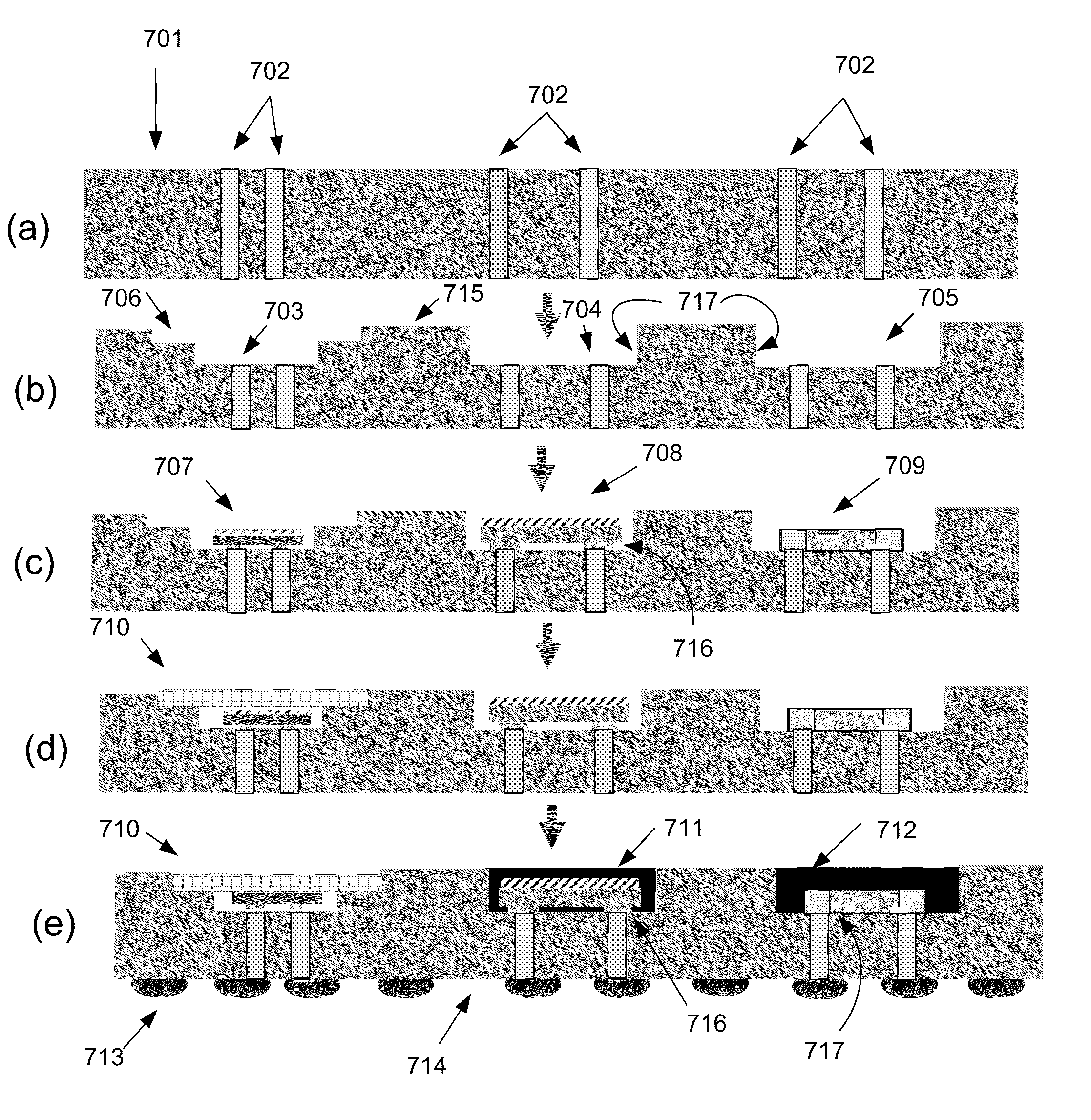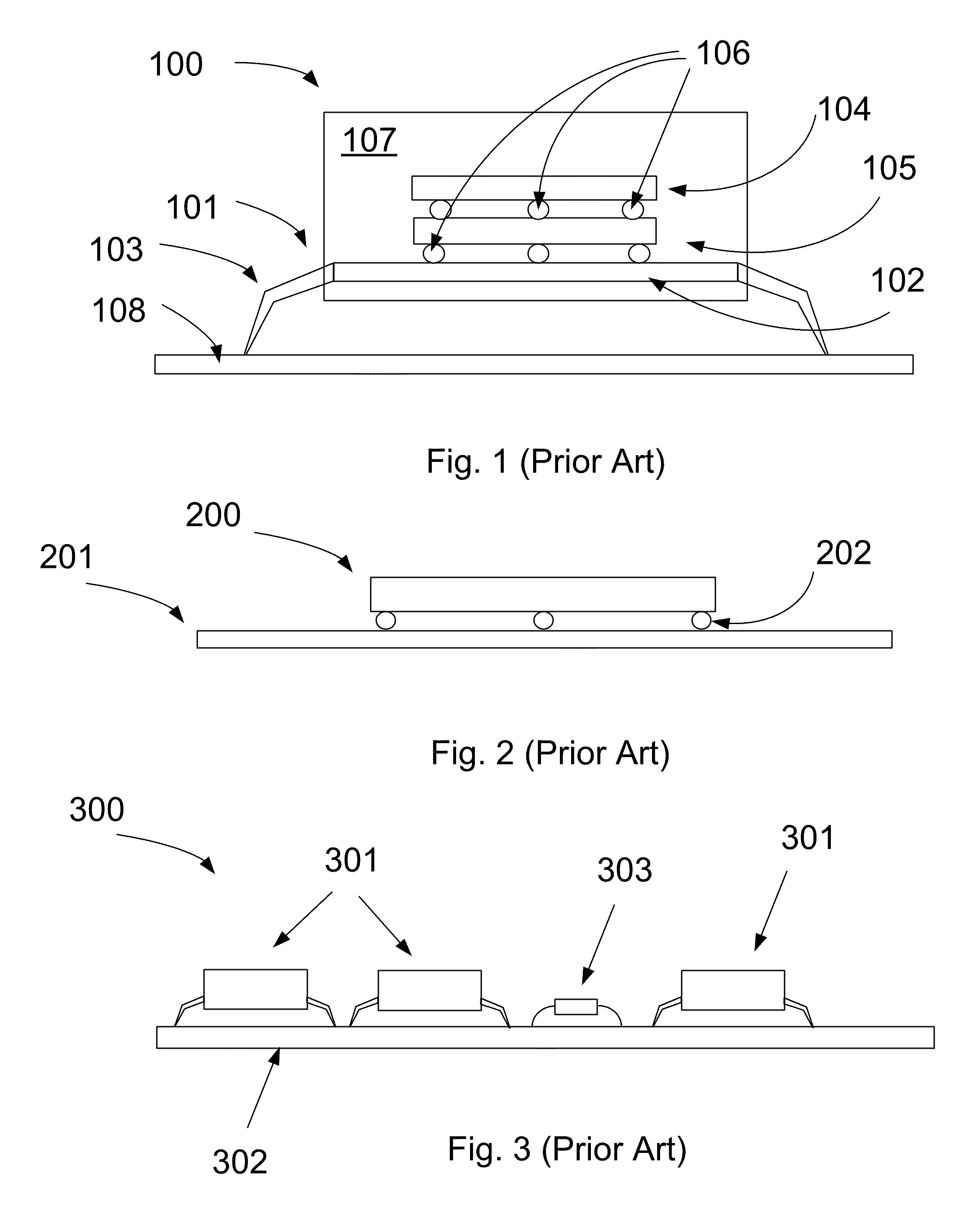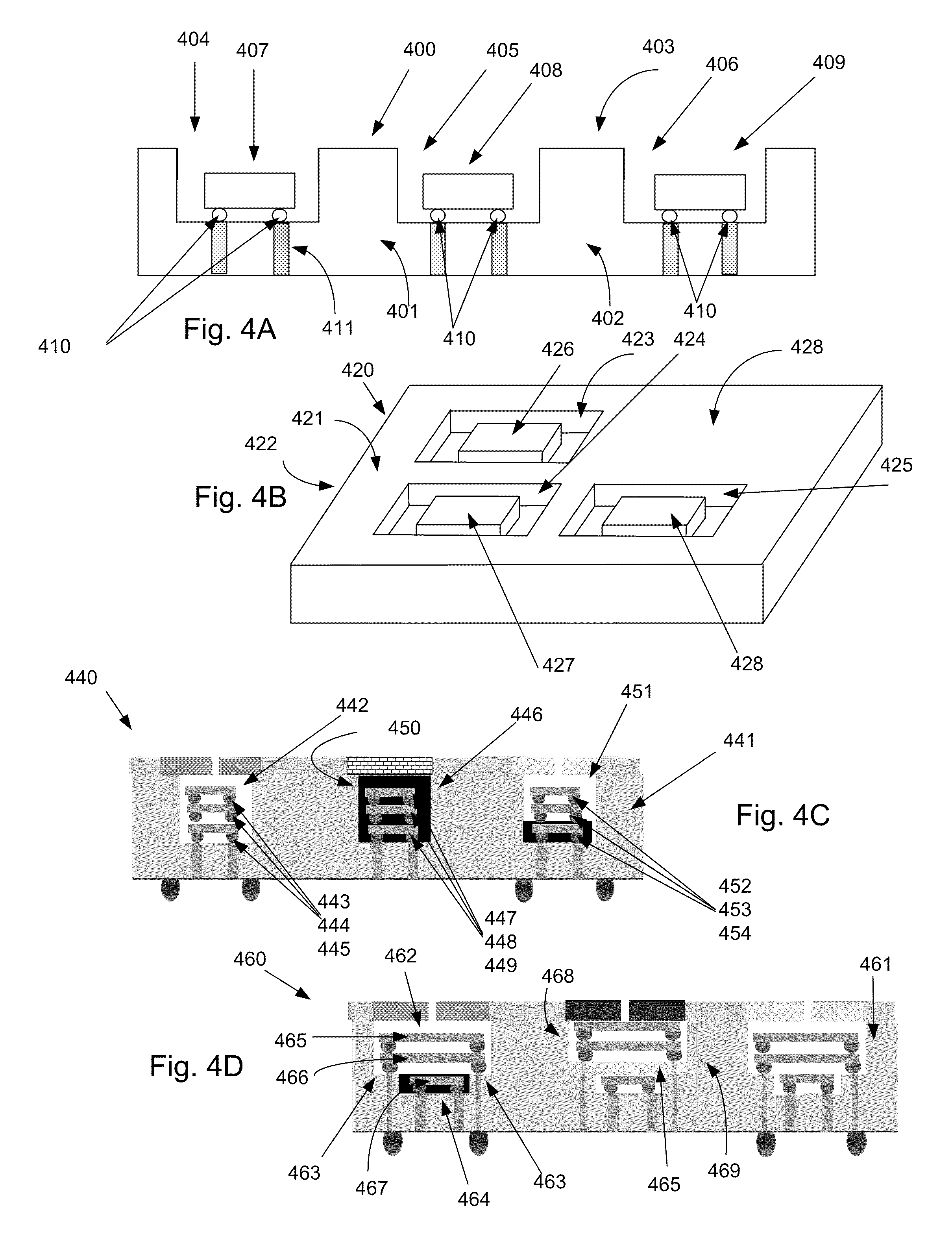System with Recessed Sensing or Processing Elements
- Summary
- Abstract
- Description
- Claims
- Application Information
AI Technical Summary
Benefits of technology
Problems solved by technology
Method used
Image
Examples
embodiment 1200
[0074]One such embodiment 1200 is schematically illustrated in FIG. 12. The laminate base 1201 includes multiple layers [such as 1201(a) and 1201(b)], which may alternate in material or electrical conductivity. For example, some embodiments may include layers that are insulators, layers that are power or ground planes, and layers that include conductors to transmit signals from one point in the base to another.
[0075]A recess 1202 in a laminate base 1201 may be created by an aperture 1203 in a layer 1201(a) of the laminate base 1201, or a plurality of aligned apertures in two or more of the layers 1201(a), 1201(b) and 1201(c). A recess may be open to the environment, or may be closed-off from the environment. A cap 1204 above a recess 1205 may be formed by a layer 1201(b) above the recess. In some embodiments, a sensor or integrated circuit 1204 may occupy a layer above the recess 1205, and partially or completely close-off the recess 1205 from the external environment. A cap, lens, ...
embodiment 1300
[0076]FIG. 13 schematically illustrates an embodiment 1300 of a laminated base 1301, and specifically illustrates details of the laminate near an edge 1302 of the laminated base. To resist de-lamination, such as from thermal stress, various layers 1303, 1304, 1305 may be made to interlock. For example, interlocking may be facilitated by increasing the surface area between two adjoining layers 1303, 1304 by having one layer 1304 extend into the other 1303, while causing the other layer 1303 to cover the extension. In an alternate embodiment, layer 1306 extends into layer 1307 by extending fingers or vias 1308 between layers. In a preferred embodiment, such interlocking features are in the region of singulation to mitigate propagation of cracks or delamination from the edges.
[0077]A cover, cap, filter, or lens in a laminate base may be at or near a surface of the laminate base, as highlighted in FIG. 14A. The cover, cap, filter, or lens 1401 may include openings serrated edges 1402 to...
embodiment 1700
[0082]In this embodiment 1700, the laminate substrate 1701 (containing the sensing structures, lenses, filters, etc., 1707, 1708) is mounted on a silicon substrate or integrated circuit 1702, which may include circuitry to drive or control the sensing system 1700 or its individual sensors 1707, 1708, or process the output of one or more of the sensors 1707, 1708. An advantage of such an embodiment is that the laminate substrate 1701, or other such embedded structure, could be tailored to suit different sensing applications as required, simply by designing variations that all mount to the same processing integrated circuit. The processing integrated circuit 1702 could be, for example, a digital signal processor (“DSP”), an application-specific integrated circuit (“ASIC”) or other integrated circuit adapted to mount to and electrically communicate with the laminate substrate 1701.
[0083]A variety of laminate substrates 1701 may be adapted to mount to one design of integrated circuit 17...
PUM
 Login to view more
Login to view more Abstract
Description
Claims
Application Information
 Login to view more
Login to view more - R&D Engineer
- R&D Manager
- IP Professional
- Industry Leading Data Capabilities
- Powerful AI technology
- Patent DNA Extraction
Browse by: Latest US Patents, China's latest patents, Technical Efficacy Thesaurus, Application Domain, Technology Topic.
© 2024 PatSnap. All rights reserved.Legal|Privacy policy|Modern Slavery Act Transparency Statement|Sitemap



